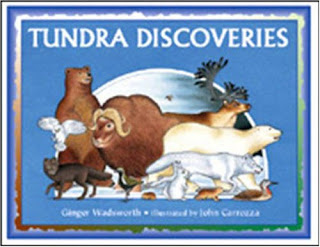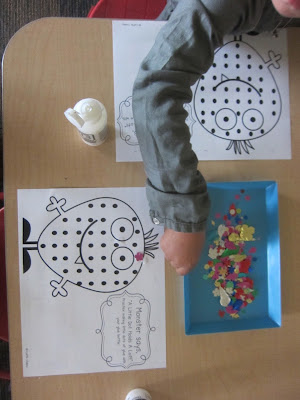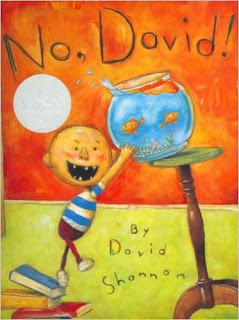Week 1: Over the River and Through the Willows
After the first few weeks of school, we start focusing on our surroundings. Here in Saint Mary's, we have shrubland and boreal forest, but mostly arctic tundra.
Fall changes begin in early September, and by mid-September we have freezing temps, so late August is prime time to get out and explore!
We started the unit with a question: What lives on the tundra? The kids already had some good answers- bears, wolves, and blueberries. Some suggestions were not actually "alive" - snow and rocks, for example, but we would investigate that concept more later.
Flora & Fauna
I introduced one tundra bird (the ptarmigan) by bringing out some preserved wings, tails, and feet. We had a conversation about these and explored them a bit, and then used Sharpies and watercolors to make representations. They did a great job of looking at the details!
We also learned about bears, which we painted with black tempera:
...and moose, which we drew with sharpies and filled in with chalk pastel.
I then showed the kids some tundra plants I had picked on my own, like these crowberries.
We taped them to tagboard and wrote labels for them together.
We then predicted what we might see on our upcoming field trip with some crayon art. Answers ranged from black bears to frogs to hawks. After the trip we would revisit these pages.

Scavenger Hunt
On Wednesday, we would be taking a boating trip upriver to get out on the tundra for scavenger hunting and berry picking. To prepare, we did a practice scavenger hunt in the classroom. Partners had to find 10 classroom items and bag them. I was really impressed with their cooperation and autonomy in "reading" the pictures.
Here's a copy of mine. In the fall I have a sensory tray with rocks and various nuts, and we use socks for erasers on our whiteboards- in case you're wondering why some of these items would be in my classroom!
Tundra Trip
The morning started out foggy and cool, but by lunch, it had all burned off and we had sunshine! One big (positive) distraction was all the spiderwebs around. The kids were mesmerized, so I took a few pictures for us to look at later.
Blueberry Milkshakes
The following day, we gathered some of the berries I had collected to make milkshakes. We did this in small groups so that everybody could take part.
They must of really enjoyed it, because the next day a child asked me, "Miss Sarah, why aren't we making milkshakes again today?" These types of activities take so much prep, but it's so rewarding to hear kids telling their parents after school, "Guess what I did today!"
Interested children helped me write the words for our instruction book on "How to make a blueberry milkshake," or as a child ended up writing it, "Hake a make shake milk how to." :)
This has been a popular hall display, with my Kinders telling their parents and older siblings step-by-step how to make a milkshake. Great sequencing practice!
We also took a survey- Do you like blueberry milkshakes? Even the child who chose to go against the grain and vote "no" drank all of his, and said yum! :)
Tundra Science Center
We gathered up the tundra plants from our scavenger hunt bags, and placed them in trays in the science center, along with a moose, caribou, wolf, and bear from Safari, Ltd.
Collaborative Art Center
At the art center this week, we worked on a big mural of the area we visited. First, we used black crayon, and the following day, we used watercolor.
Week 2: Blueberries!
Memory Book
We wrote about our favorite part of the trip and made a class book from the pages.
Songs!
To commemorate our boat trip, we each made a fish, and helped write the words to a song about fishing. I laminated it, so now we have a chart song we can enjoy throughout the year.
I hate dealing with giant chart tablets, so I write out all our songs on 12 X 18 heavyweight construction paper. It's still big enough for the kids to see and easy enough to hang on my whiteboard with a magnetic clip. These clips have been worth their weight in gold.
I combined a few songs/rhymes I found online to make this one. They love it, and with the numbers and repetition, it's easy for pre-readers to follow along, pointing to each word. This week a child told me they couldn't stop singing this song at home because it was stuck in their head!
Homemade Playdough
We made blueberry playdough.
Taste Testing Our Berries
Finally, we taste tested 4 types of local berries: blueberries, blackberries, cranberries & raspberries. We recorded our like (or dislike) of each berry with a happy face or a sad face next to the berry's name.
Most of the kids liked ALL the berries! They had a hard time picking their favorites for our graph.
I love sticky notes for making graphs! So quick and easy, and each child doesn't have to wait for a turn to make a choice- it takes about 2 minutes from start to finish. They get good at knowing to start at the bottom and line the stickies up as closely as possible! Doing a lot of graphing also helps a LOT with the difficult concept of most/least.
Song List
This is the song we learned for this unit. I combined a few songs/rhymes I found online to make this one. I have kids take turns pointing to the words while we sing.
Book List
These
are my favorite books for studying the tundra.
Blueberries for Sal by Robert McCloskey
Tundra Discoveries by Ginger Wadsworth
Berry Magic by Teri Sloat
Nessa's Fish by Nancy Luenn
Arctic Winter, Arctic Summer by Susan Canizares
Other good books:
Alaska ABC Book by Charlene Kreeger
The Itchy Little Musk Ox by Tricia Brown
Caribou Journey by Debbie Miller
Wolves by Gail Gibbons
Deer, Moose, Elk & Caribou by Deborah Hodge
Salmon Stream by Carol Reed-Jones
Swimmer by Shelley Gill















































